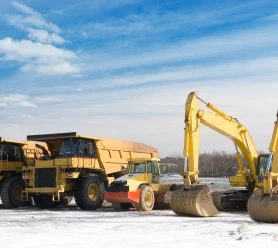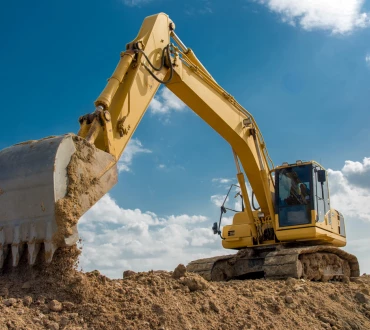Maintaining your excavator or bulldozer is essential for keeping operations running smoothly and efficiently on the job site. Worn steel track chains can not only cause performance issues but also lead to costly repairs and unexpected downtime. In this guide, we’ll walk you through the signs of track wear, explain why it’s important to replace worn tracks promptly, and provide a step-by-step process for replacing them.
Recognizing the Signs of Worn Tracks
Steel tracks are designed for durability, but over time, wear and tear can take a toll on their performance. Here are some key signs that indicate it’s time to replace your tracks:
Cracks or Breaks in Track Links: Visible damage can significantly compromise the integrity of your track system, leading to further issues if not addressed.
Uneven Wear Patterns: Misalignment or poor tensioning can result in uneven wear, which may damage other components of the undercarriage.
Reduced Grip or Slipping: Worn tracks with shallow tread depth may struggle to maintain traction, especially on difficult surfaces.
Excessive Noise During Operation: Grinding, squealing, or other unusual sounds can indicate that the rollers or bushings are worn and need attention.
Why Replacing Worn Tracks Is Essential
Replacing worn tracks is not just about restoring your machine’s performance; it’s also about preventing more serious damage to other critical components like sprockets and idlers. Here’s why you should address track wear promptly:
Improved Efficiency: New tracks ensure a smoother and more consistent operation, keeping your machine working at its best.
Extended Equipment Life: By performing preventive maintenance, you can avoid costly repairs and reduce the likelihood of unexpected downtime.
Enhanced Safety: Properly functioning tracks offer better stability and traction, improving the safety of your equipment and operators.
A Step-by-Step Guide to Replacing Steel Tracks
Replacing worn tracks may seem like a daunting task, but with the right tools and know-how, you can get your machine back to peak performance in no time. Follow these steps to replace your steel tracks efficiently:
Inspect Your Tracks: Begin by thoroughly checking the tracks for any cracks, uneven wear, or tension issues. Identifying these problems early can save you time and money in the long run.
Gather Necessary Tools: Before you begin, make sure you have all the required tools on hand, including track removal tools, a jack, and a wrench set.
Remove the Old Tracks: To remove the worn tracks, release the tension on the tracks, disconnect the master link, and carefully slide the tracks off the undercarriage.
Install the New Tracks: Align the new tracks with the undercarriage, reconnect the master link, and adjust the tension to ensure a proper fit.
By following these steps, you can extend the life of your equipment and prevent costly delays on the job site. Proactive track maintenance is a simple yet effective way to ensure that your excavator or bulldozer stays reliable and efficient, so you can focus on the job at hand.
Why Choose Construction Parts?
When it comes to replacing worn tracks and other undercarriage parts, Construction Parts is your go-to source. Here’s why:
Extensive Inventory: We offer a wide range of tracks and undercarriage parts for both excavators and bulldozers, ensuring you have access to the right parts for your equipment.
Fast Shipping: Our coast-to-coast network ensures prompt delivery, so you can minimize downtime and keep your projects on track.
Expert Support: Our team of specialists is always ready to help you find the exact part you need with ease, providing personalized advice and support to ensure the best fit for your machine.
Choose Construction Parts for reliable, efficient service, and the quality parts you need to keep your heavy equipment performing at its best.

Consult our knowledgeable staff for your wear part questions.
Related

Cold Weather Maintenance Tips for Construction Machines
Cold weather can take a significant toll on construction machinery, leading to issues like reduced battery performance, increased wear on parts, and difficulty starting equipment. To keep your construction machines running smoothly during the winter months, proper maintenance is essential.
- Maintenance & Repair
- December 12, 2024


